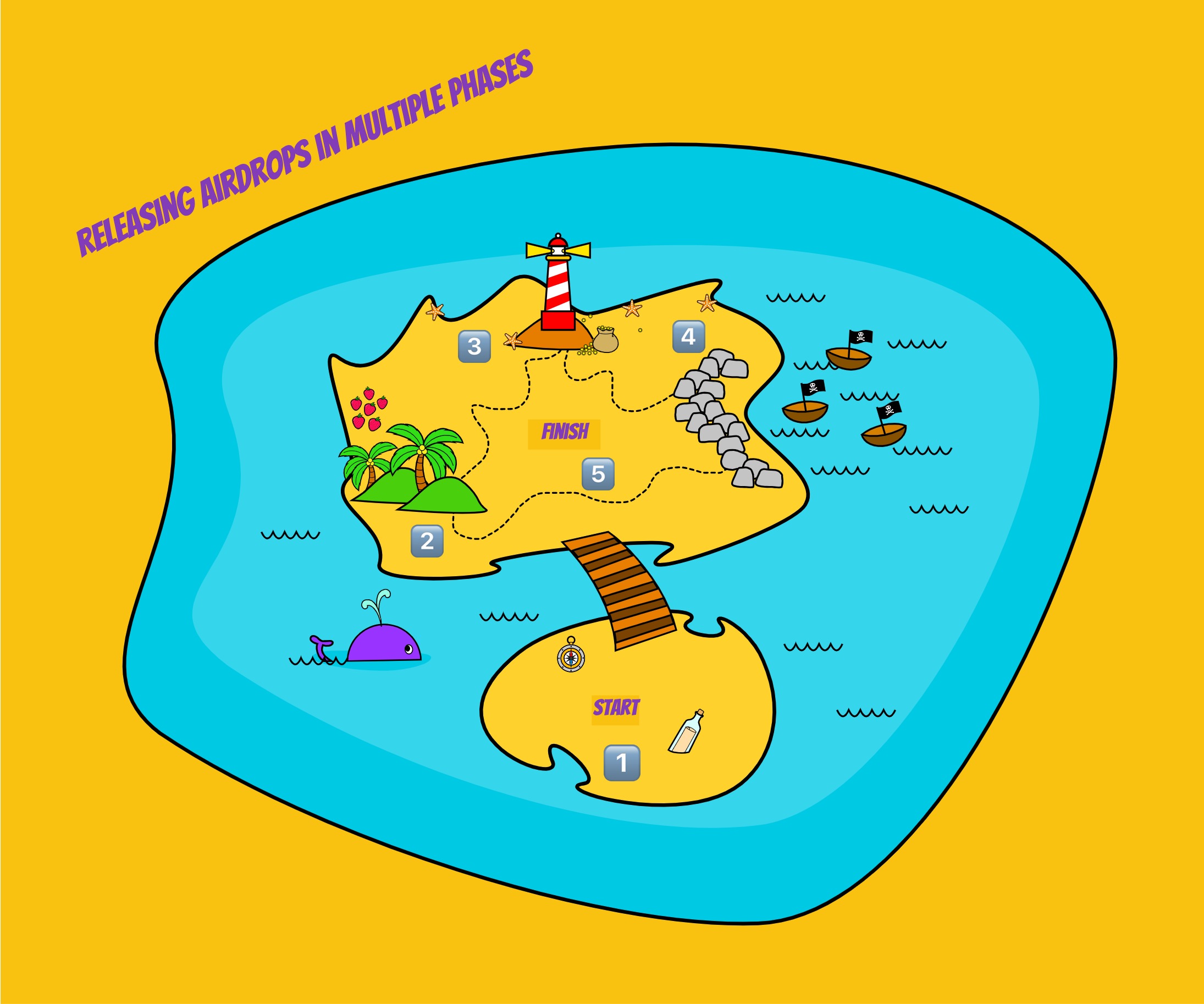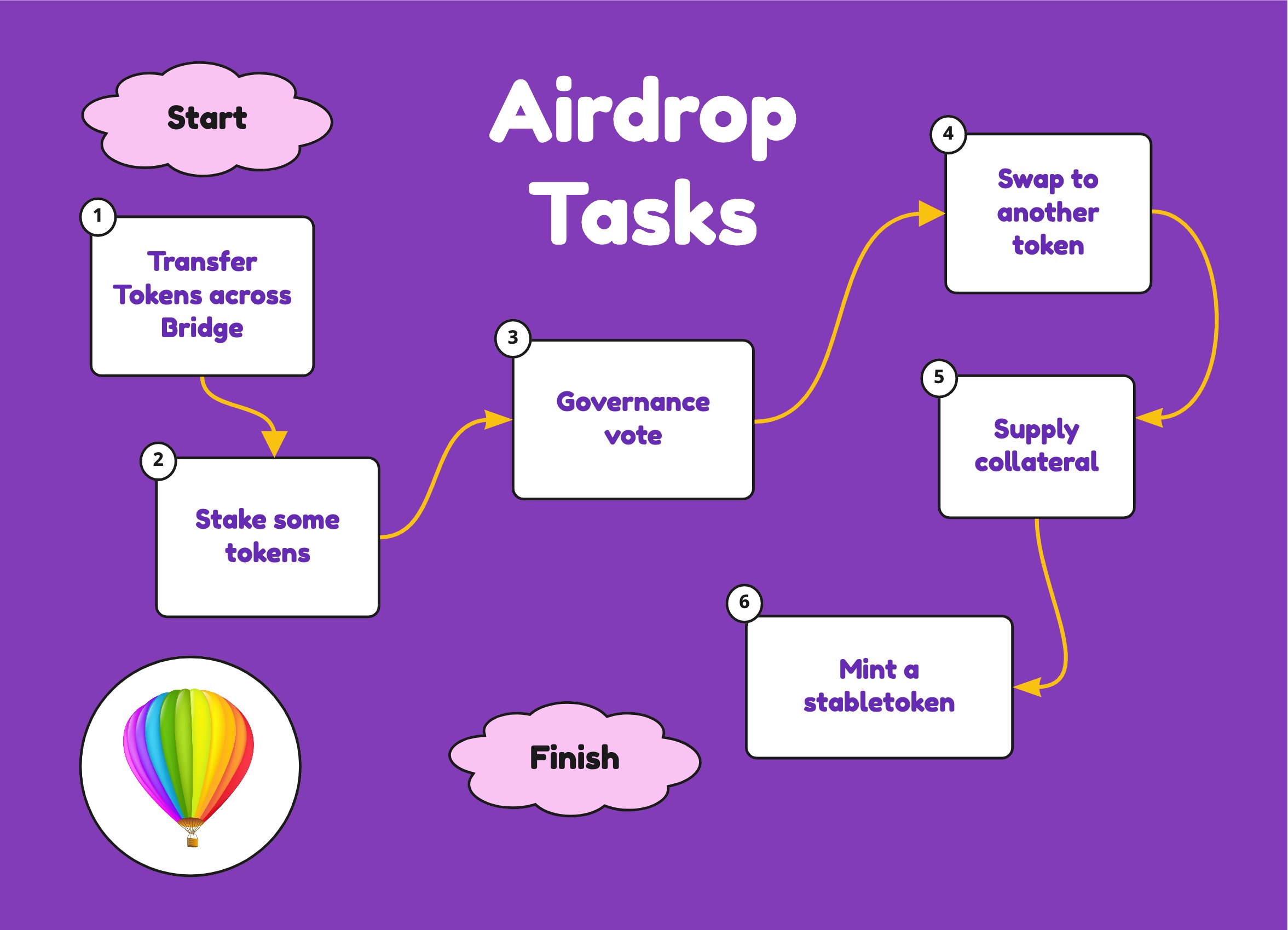The Great Airdrop Debate

A New Airdrop Adventure
As I am embarking on another journey into unfamiliar territory, I am reflecting back on the best and the worst airdrops I have been a part of. The Arbitrum Odyssey just kicked off and it appears to be a super exciting event, spanning across eight weeks and multiple NFT airdrops. Will this be a successful series of airdrops? Will it meet the expectations of both the builders and users across this growing ecosystem? Honestly, I can not wait to find out; especially, because I have not explored Ethereum and its Layer 2 protocols and dApps. If you are interested in joining this Odyssey, I have left links in the Sources section to get you started.
The Best Airdrop
Not surprisingly, being an avid experimenter, I have participated in and received nearly a hundred airdrops. In the process, I have developed a short list of what qualifies as a successful token airdrop (fungible or non-fungible). Here it goes:
- The protocol or dApp has defined, communicated, and stood by the airdrop distribution criteria
- The distribution should support the future value of the protocol
- The airdrop should be designed to avoid a “sell and dump” of the token event
- Upon launching the airdrop, there should be functionality in the protocol or dApp
- The airdrop recipient should be required to engage with the blockchain, protocol, or dApp.
Why am I proponent of having to work for your drop? Why not just distribute it wide and far? Because, those events make up my short list of the worst airdrops I have participated in.
The Worst Airdrop
Here is that short list of what I think makes for a forgettable airdrop event:
- The airdrop criteria are poorly communicated
- The airdrop criteria are changed, after the announcement communication has been released
- The airdrop comes with a bribe that negatively affects another team of builders or group of users
- The airdropped tokens are released all at once
- The protocol or dApp airdrop functionality does not work or crashes
- The congestion and transaction delays lead to frustration
- Drops using whitelists (borrowing from today’s Wordle, that is an “awful” word, which exemplifies misplaced exclusivity)
- Once received, there is no utility in the protocol or dApp
- The airdrop comes with a staking requirement; yet, there is no introduction of use cases from the protocol or dApp for months.
All these types of events inevitably result in an extremely short-term rapid rise in the price of the airdropped token and a subsequent prolonged drop. User engagement disappears as quickly as the value of the token.

Here are some examples of the types of airdrops that I thought were really cool, super interesting, and resulted in positive experiences for both the users and the builders.
Phased Airdrops
The airdrops that are divided into distinct phases are very effective. They make the user come back again and again to interact with the dApp. This method also ensures that the token is not bombarded with massive amounts of sell pressure, all at once.
The most successful of these events I have personally experienced were those that tied receiving a portion of the airdrop to specific launches of dApps on the protocol, new functionality implemented in stages, or milestones reached. For example, I have seen numerous DeFi protocols use the following approach:
- Phase One - launch the token and enable staking
- Phase Two - open the swap functionality
- Phase Three - open the liquidity pools
- Phase Four - commence incentivized farming.
Of course, if extended periods of time pass between these phases, the effects are diluted and user engagement is weakened.

A Task Oriented Approach
I really like this type of an airdrop, because working for the free tokens is the way to ensure user engagement with the products.
Specific examples of the task oriented approach include:
- Transfer the tokens across a bridge
- Stake some of the tokens
- Participate in a governance vote
- Swap some of the airdropped tokens to another token that interacts with the blockchain, protocol, or dApp.
- Supply collateral to a lending dApp.
- Mint a stabletoken.
As a user, I want to perform multiple tasks, because that way I really learn how the protocol works and what is possible with the technology. Usually, it also leads me to try other products, inject additional funds, or increase my engagement.

Implement Utility First
One of my pet peeves is receiving tokens in an airdrop and excitedly going to the dApp to see what is offered and finding….nothing!
You all know who you are: ghost chains, protocols under construction, and invisible dApps floating around in the crypto universe that have tokens and nothing else. What is the point of releasing a token if you are not going to have utility ready and deployed first?
New builders, can you please make sure you have utility implemented when you release your airdrop? If that seems daunting, I have seen plenty of chains launch testnets, airdrop tokens on the testnet, get lots of user interaction, work out all the bugs, and subsequently launch successfully on the mainnet to a wider audience.

NFT Drops
Nothing puzzles me more than new NFT projects that generate lots of community engagement with amazing marketing campaigns, launch a successful genesis NFT collection with beautiful designs, just to go silent for months and not do a thing.
Why not take advantage of all that excitement and have multiple, additional functionalities and products ready to deploy in the weeks and months following the genesis drop? I have seen plenty of great airdrop ideas for this concept, including:
- Airdrops of auxiliary collections to the genesis NFT owners
- Airdrop loot NFT’s to the genesis NFT owners
- Have the NFT unlock opportunities in a game
- Launch a secondary collection and use the same airdrop strategy
- Use NFT airdrops to users that perform tasks in the dApps.
And since I am such a staunch opponent of those exclusive “reservation lists”, here is another idea that I have seen work with great success. Launch a token, which the prospective owners of the NFT can purchase, stake, and farm in order to receive a ticket to the minting event. Who needs a “exclusionary list” when you have a ticket machine?
And then there is the whole concept of reward NFT’s being developed, as we speak. These NFT’s could also be airdropped, but the tokens are received over time as rewards, which are tied directly to the NFT.

Novel Approaches
The protocols that come up with the most unique approaches to getting their tokens in circulation via airdrops are the ones that I believe have experienced the most success.
Besides the ones mentioned above, I have encountered additional (more complicated) examples, including:
- Requiring tokens to be bonded and farmed
- Vesting of tokens with a steady stream of rewards
- Locking up tokens with a promise of future rewards
- Paying out increasing amounts of rewards depending on the length of the lock-up periods
- Providing liquid derivative tokens in return for staking tokens.
All of these methods ensure the longevity of the protocol and the stability of the token.

Executing for Success
As I embark on another adventure, one that once again involves airdrops, I wanted to share some of my thoughts on the subject with you. Obviously this is not an exhaustive list and I would love to hear from you what other effective airdrops you have participated in.
There are as many different points of view on how to successfully execute an airdrop, as there are protocols in the crypto universe. Therefore, I suspect that the Great Airdrop Debate will rage on. But next time when you participate in that airdrop for a token that has no utility, you know what to do. And those that do have utility, that encourage you to learn something unexpected, experience something unique, and allow you to engage with people across the globe, they are the keepers.
Hopefully, I have been able to share some valuable points of view in this debate; in the meantime, I look forward to exploring Arbitrum’s Odyssey and having some cool NFT’s airdropped to me as a reward for my enthusiastic participation.
Het avontuur gaat door – Opa.
Sources, References, and Further Reading
Article introducing the Arbitrum Odyssey - https://medium.com/offchainlabs/the-arbitrum-odyssey-87d6e11171d5
Project Galaxy “Enter The Odyssey” - https://galaxy.eco/arbitrum/campaign/GCCNzUtQiW
Arbitrum – https://arbitrum.io/
The Arbitrum ecosystem - https://portal.arbitrum.one/
Arbitrum Odyssey Event Tracker - https://dune.com/springzhang/arbitrum-odyssey-event-tracking

Posted Using LeoFinance Beta